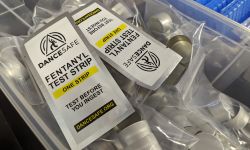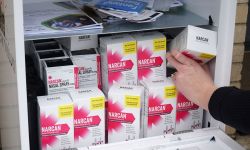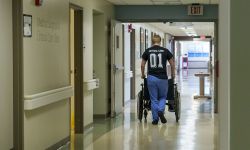Nearly killed by COVID-19, Michigan doctors, nurses return humbled, smarter
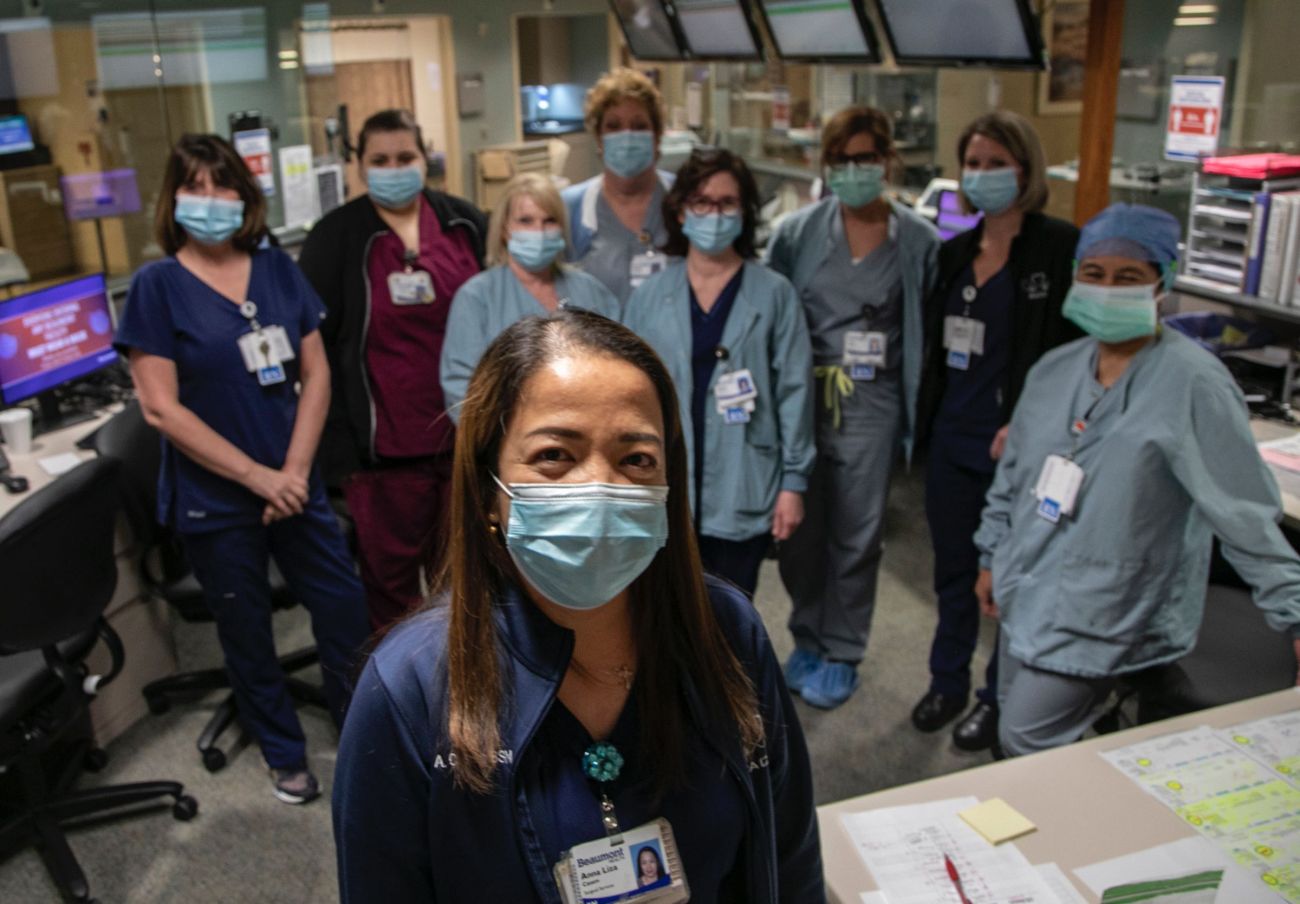
One nurse compiled important documents and passwords in a shoe box, carefully placing it so her family would find it in her study if she died.
An anesthesiologist instructed colleagues to intubate him, knowing he was losing the fight to breathe on his own.
A colorectal surgeon hugged his wife at the emergency room doors, keeping to himself the knowledge that he was likely not to see her again.
Get involved
Detroit Free Press, Bridge Magazine and Michigan Radio are teaming up to report on Michigan hospitals during the coronavirus pandemic. If you work in a Michigan hospital, we would love to hear from you. You can contact Kristen Jordan Shamus atkshamus@freepress.com, Robin Erb at rerb@bridgemi.com or Kate Wells at Katwells@umich.edu at Michigan Radio.
From his hospital room in March, a sick and exhausted Dr. Mohamed Fayed, a resident at Henry Ford Hospital, texted his wife to make sure she knew about his life insurance.
“I said ‘I can’t do it.’, Fayed, 40, an anesthesiology resident physician and father of 4-year-old, Zeina, told Bridge in May, after he recovered.
“It was suffocating, like a slow death,” he said.
Michigan health care workers have been on the front lines of the war against COVID-19 since March. And like in any war, there have been casualties.
Some health care workers died. Among those who’ve survived, some are still recovering, while others have returned to work, holding the hands of patients still battling the potentially deadly virus.
- The latest: Michigan coronavirus map, curve, chart, updated COVID-19 news
- Dashboard: Michigan coronavirus testing numbers, trends, COVID-19 data
- Gov. Gretchen Whitmer extends Michigan stay-at-home order through June 12
- Small gatherings, non-essential doctors' visits now allowed, Gov. Whitmer says
Having seen the worst of the pandemic from both sides, doctors and nurses who were infected by COVID-19 and recovered shared their stories with Bridge, from scrambling to find ventilators for patients, to recording goodbye notes to their own family members when they too were struck by the virus.
Their stories may be soberingly common in hospitals in Michigan and across the globe. About one in every 100 health care workers was infected in the early days of COVID-19, according to two recent studies — the first at two teaching hospitals in the Netherlands, the second in a China hospital — suggest that about. The studies appeared this month in the Journal of the American Medical Association.

Now as Michigan’s cases plateau, front-line health care workers who survived have begun to return to work, ahead of a possible second outbreak, if some predictions are correct.
The time working with the sickest patients — and their own confrontation with the coronavirus — did more than hone their clinical understanding of the virus. It revealed a deeper understanding of the human needs in patient care.
“There is such an emotional component to this disease. You have felt the fear that your patients feel,” said Kim Ronnisch, vice president of nursing for Ascension Macomb-Oakland. “You can’t go through this without being changed.”
No time to worry.
Dr. Eugene Vovchuk heard it on public radio on his early morning drive into work at Harper Hospital: COVID-19 had arrived.
It was March 11. The previous evening, a somber Gov. Gretchen Whitmer confirmed to news cameras that Michigan had its first two cases of COVID-19, both in southeast Michigan where Vovchuk worked and lived.

At Detroit’s Harper Hospital, Vovchuk and other anesthesiologists knew they would be engaged in literal face-to-face combat with COVID-19. They would intubate Michigan’s sickest patients for a ventilator, a risky procedure which positions an anesthesiologist in the path of the virus as it is ejected in a gag reflex.
“It’s not a matter of if, but ‘when,’” Vovchuk said, of contact with the virus.
Two nights later, the fever hit as did nausea and an “unremitting” fever that topped 103 degrees, despite round-the-clock doses of ibuprofen and Tylenol.
Vovchuk was tested at a then-new curbside site at Beaumont Royal Oak. Days passed with no results. He returned again only to be sent home once more — the limited rapid-response tests and hospital beds “reserved for people who are extremely sick,” Vovchuk recalled a doctor telling him.
By March 23, Vovchuk was too weak to drive. At Harper’s ER, the staff now wore masks, signs divided COVID areas from others, and an X-ray revealing the pneumonia filling his left lung.
“I spent the night on a stretcher in the emergency room,” Vovchuk said.
From his ICU bed two days later, the father of two young girls beckoned his colleagues. He’d need to be intubated, he told them. Even with the oxygen he was being given, his strength was giving out.
Just before the sedatives dragged him under, Vovchuk managed to thank the anesthesiologist, a doctor who once trained him as a young resident: “I told him I knew I was in good hands.”
Vovchuk regained consciousness nearly two weeks later at the University of Michigan Hospital in Ann Arbor, having been flown there by helicopter when even the ventilator appeared to be failing him.
He remembers tugging at straps in the unfamiliar ICU and trying to persuade a doctor to release him. He was certain he was on TV. Over several days, it grew easier to sort between reality and hallucinations. Staff reassured him, but he insisted on hearing his lab reports.
“I broke out in tears. I told [a doctor] I was pretty close to dying. She said ‘Don't think about that. You’re here now.’”
Vovchuk left the hospital April 16 with three prescriptions and six blood clots. He’d shed 37 pounds. He could barely walk.
The experience, he said, was “shocking.”
Still weak, he won’t be back to work for months. But everyday choices — things he never gave thought to — have changed. He reaches for fruit instead of chips. He reconsiders plopping down in front of the TV.
Life is too precious to sit out, he said he learned: “I’ve been given a second chance.”
‘What if?’ scenarios
Anna Liza Casem had spent the first two weeks of March in the same way as Vovchuk and so many others — in countless meetings and conversations to plan every “what if” scenario.
Casem, a nurse manager in a post-anesthesia care nurse at Beaumont Troy had seen the news reports from China, then Italy and elsewhere around the world.
“In my mind, I thought: ‘This is the U.S. We are prepared. We’re equipped. We can take care of this’,” said Casem, who grew up in the Philippines.
But, she said, “then boom!” Patient loads surged. Staff scrambled for ventilators and masks.
Concerned with “staffing and processes and patients,” Casem, 46, barely noticed the tickle in the back of her throat March 30, a day when Michigan’s COVID-19 case count climbed past 6,000 and Whitmer closed the state’s K-12 school buildings for the remainder of the school year.
But hours later, the chills and a throbbing headache set in shockingly quick. Her legs were suddenly so weak, she could barely walk the hospital halls.
At home, the pain exploded “like someone pulling the skin off my bones and jamming my knees with a screwdriver.”
It only grew worse over the next several days.
The mother of three opened a video recording app on her phone, instructing her family to take care of each other and to keep God as the center of their lives. She neatly stacked insurance papers, account numbers and passwords in a shoebox.
Later, in the predawn stillness April 5, Casem stood up from her bed, sweat “pouring” from her forehead, she said: “I thought ‘I’m done this day,’”
Casem recovered after going to the hospital briefly, and she returned to work April 30 — exhausted, thin, able to work only a few hours at a time.
The ordeal offered the grave reminder: Medicine can do only so much. In those darkest days, she said, her biggest fight was not physical; rather it was the mental struggle “against losing hope.”
There is still no known cure or vaccine for COVID-19. But Casem was anchored by her faith, family and friends.
“Science is science and it helps us save lives, yes, but prayer moves mountains,” she said.
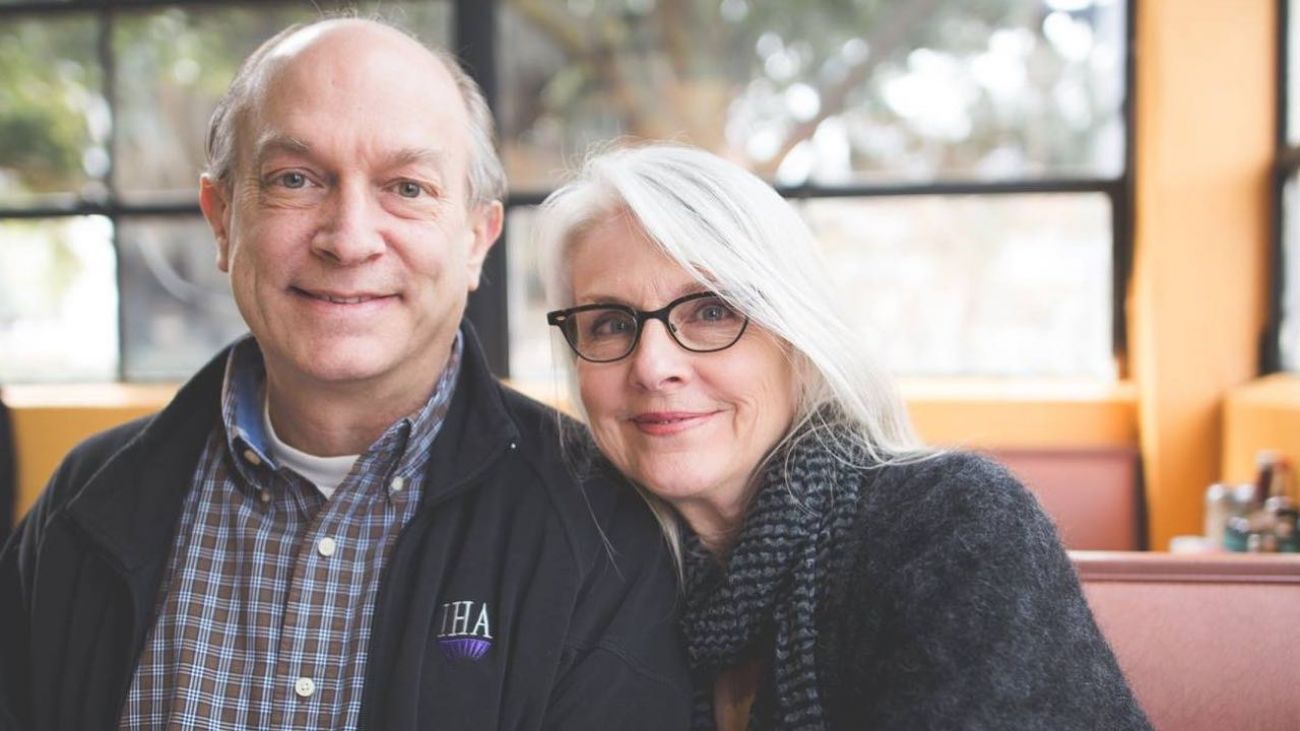
‘This might be it’
Dr. Bob Cleary had been sidelined already from his job as a colorectal surgeon at St. Joseph Mercy Ann Arbor. Those surgeries had been canceled two weeks earlier.
But on March 25 — as Michigan residents adjusted to new life under a state-imposed stay-at-home order, 62-year-old Cleary, noticed a slight fever. A test the next day confirmed what he knew: COVID-19.
For several days, “I wasn’t too worried” about the cough and slight shortness of breath, he said. He kept apart from his wife of nearly 34 years — a “top flight” nurse, he calls her.
But then came Day 8 — smack dab in the middle of what some doctors now view as a turning point for patients.
In touch with him daily, Mercy doctors recognized that Cleary was increasingly struggling to breathe. It was time to come in, they told him.
First, he cracked open his laptop and tapped out a letter.
“I married the prettiest woman on the planet and our personalities were complimentary. I loved you, Molly, with all my heart, and if offered the opportunity to do it again, would say hell yes,” he wrote. He told his six children how proud he was of each of them.
He never told them about the letter, leaving it prominently on his desktop where his family would find it.
At the hospital, he gave his wife a kiss without telling her what he knew: “The second week was the bad week and I wasn’t better yet, so this might be it. I didn't talk to her about that. I didn’t want to upset her.”
A doctor at his bedside pulled up his lung X-ray on her computer: “We both gasped,” he said. “The pneumonia, the fluffy infiltrates in both lobes, were pretty impressive.”
In St. Joseph’s sixth floor intensive care unit, Cleary drifted in and out of consciousness and reality for many of his 11 days there — seeing, for example, a phantom pool of oxygen in the corner of the room.
Cleary has since written to the staff. “You are all rock stars,” he told them.
He’s always tried to put family first, but now there’s a heightened sense of priority, said Cleary, who is now recovering at home, his voice still erupting in coughing fits.
“The first thing I do when I wake up … is not to think about how I’m going to do that robotic operation that morning, but it’s to give thanks for my family and thanks to God for a second chance,” he said.
‘Awful and unreal’
As March turned into April nurses in southeast Michigan had become a “stand-in family” for patients — holding cellphones for FaceTime calls, scrambling to find charger cords.
“It was so strange, said Kim Ronnisch, 51, a nurse at Ascension Warren. “The intensity of the emotions, the fear — it felt awful and unreal.”
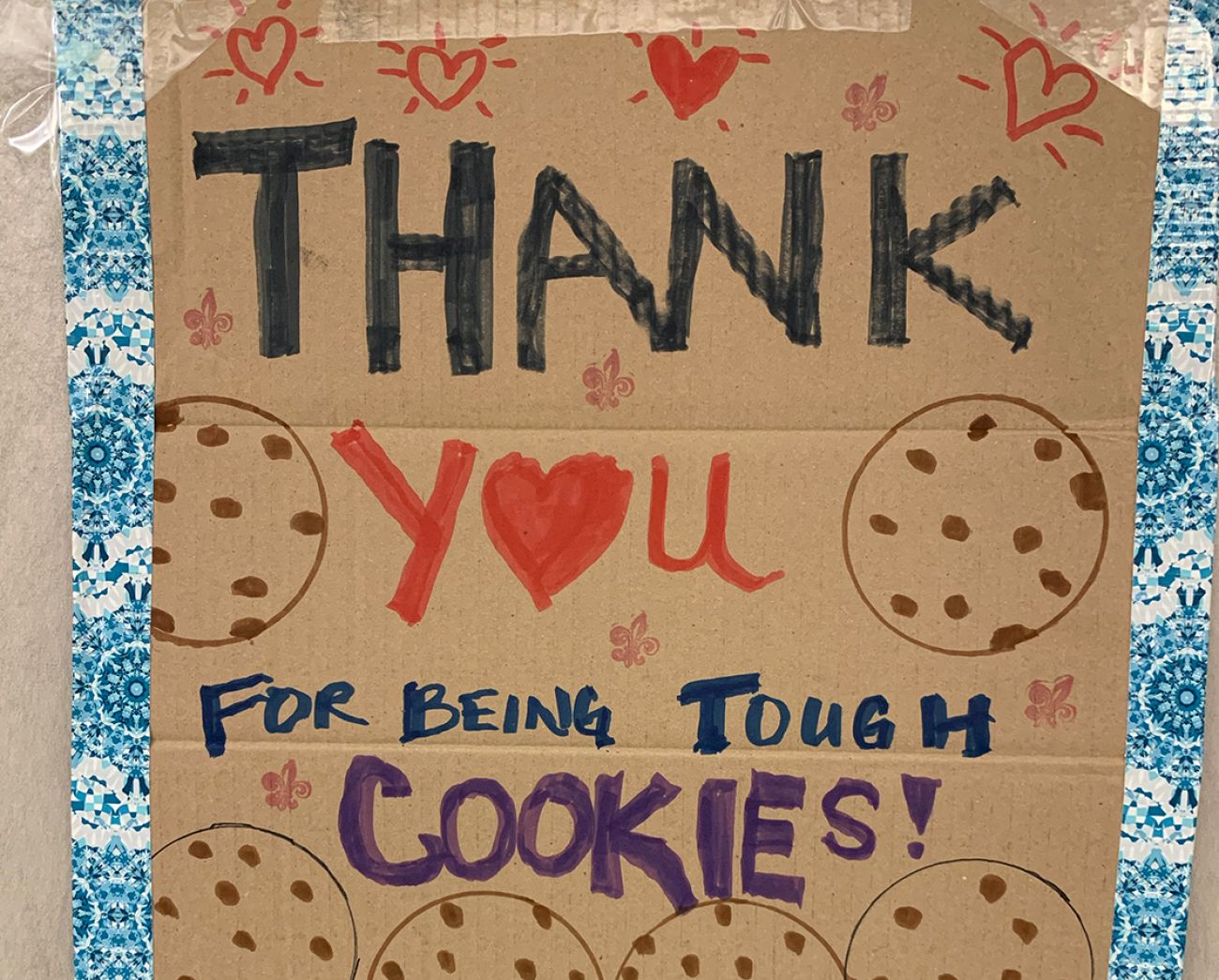
Through the layers of hot, uncomfortable personal protective equipment that made it hard to see and hear each other, staff connected. They created portable candy carts, piling it with full-size candy bars, crackers and energy drinks. They scribbled out messages to each other on door windows.
As Ronnisch relaxed with a book her first day off in weeks — March 28, the same day President Donald Trump granted disaster aid to Michigan — fear flooded over here nearly as quickly as the fever.
The weight on her chest became unbearable. Within days, she was sleeping nearly round-the-clock, forcing herself to eat from the plates that her husband left for her at the bedroom door.
At one point, “there was this intense buzzing moving through my body. I could feel it. I could hear it.”
She instructed her husband, Andrew: If she had to be hospitalized, she had to have two things — her phone and charging cord.
“I told him, ‘I can’t leave this world without seeing you’,” she said.
As it turned out, Ronnisch was able to spend what she said was a miserable two and a half weeks at home. She monitored her own oxygen levels and heart rate and turned on her stomach throughout the day, an effort called proning, which allows patients’ lungs to feed more oxygen to their bodies.
Though technically recovered and back at work, Ronnisch continues to fight against fatigue, and she is buoyed by the mail that flooded in during the early days of the fight at Ascension.
“Thanks for keeping me safe,” one child wrote. Added a scout group: “Thanks for being tough cookies.”
Those notes, Ronnisch said, “mean everything.”
'I’m here.'
By April 14, as the state’s daily case counts began to fall, Beaumont Royal Oak nurse Montana Green realized at work she could not taste her Diet Coke.
She grabbed an orange juice. It, too, was tasteless.
She was most likely just exhausted, she thought.
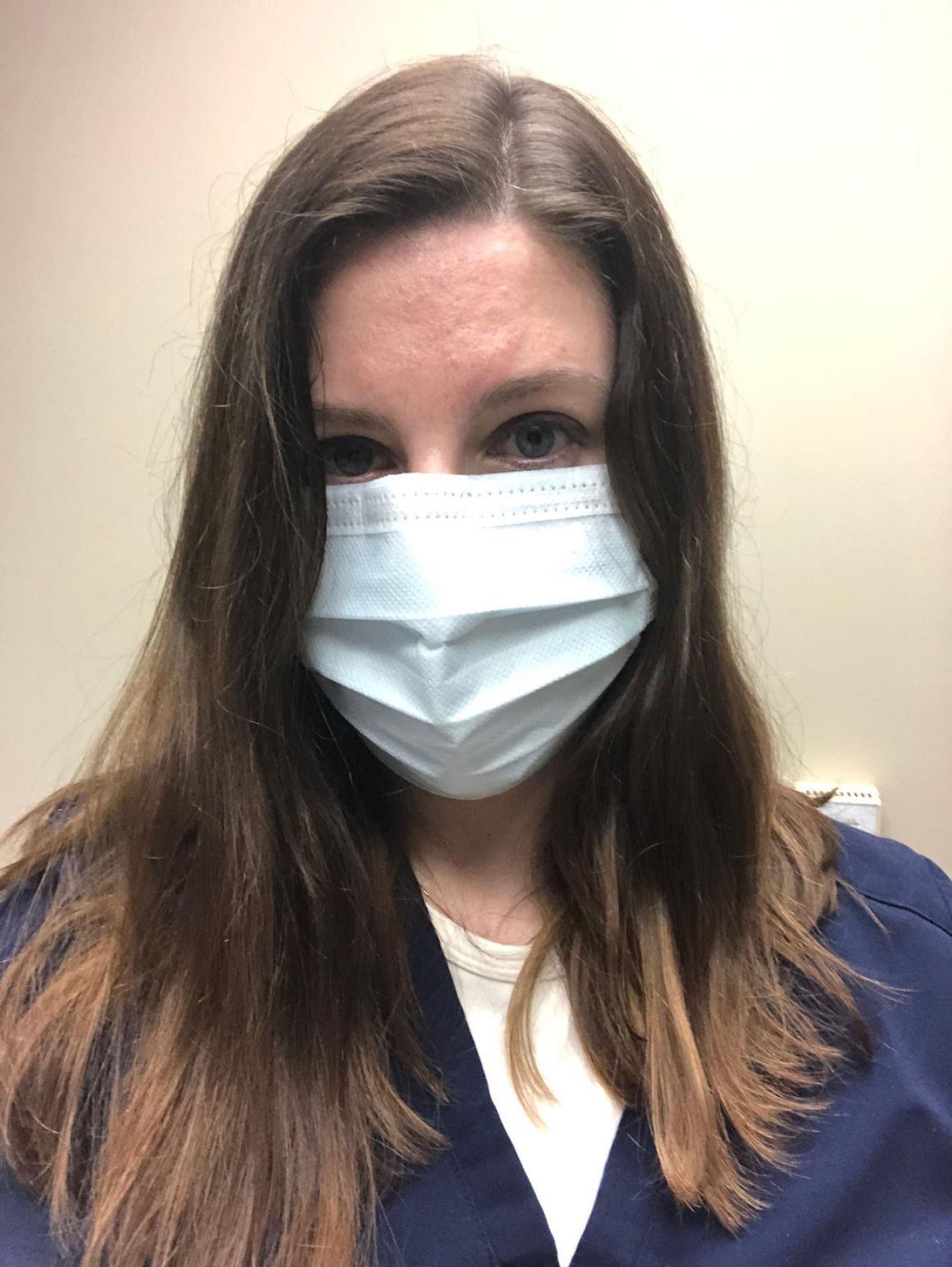
When she tried to walk her beagle pups the next day, Green — a runner and a former figure skater — struggled to catch her breath.
Allergies, she figured.
“I think there’s sometimes a denial” on the part of health care workers, she said.
The worst of the virus slammed into her days later at home after a brief trip to the emergency room. For days, Green was dogged by memories of patients who had crashed quickly, the type of stories Green and other nurses shared as they huddled in a conference room in the early days of the pandemic.
“It was scary,” she said. “I kept thinking of all of these patients and how badly things had gone so quickly.”
Now back to work, Green hopes the memory of fear when she was sick, herself — much like the antibodies she now carries, will linger to encourage others.
“I’ve always valued the relationships with patients, but there’s a heightened sense of it now,” she said. “In those moments, we’re sometimes the only ones holding their hands or touching their arms… and I can tell them now: ‘I’m a good story. I made it. I’m here.’”
See what new members are saying about why they donated to Bridge Michigan:
- “In order for this information to be accurate and unbiased it must be underwritten by its readers, not by special interests.” - Larry S.
- “Not many other media sources report on the topics Bridge does.” - Susan B.
- “Your journalism is outstanding and rare these days.” - Mark S.
If you want to ensure the future of nonpartisan, nonprofit Michigan journalism, please become a member today. You, too, will be asked why you donated and maybe we'll feature your quote next time!


